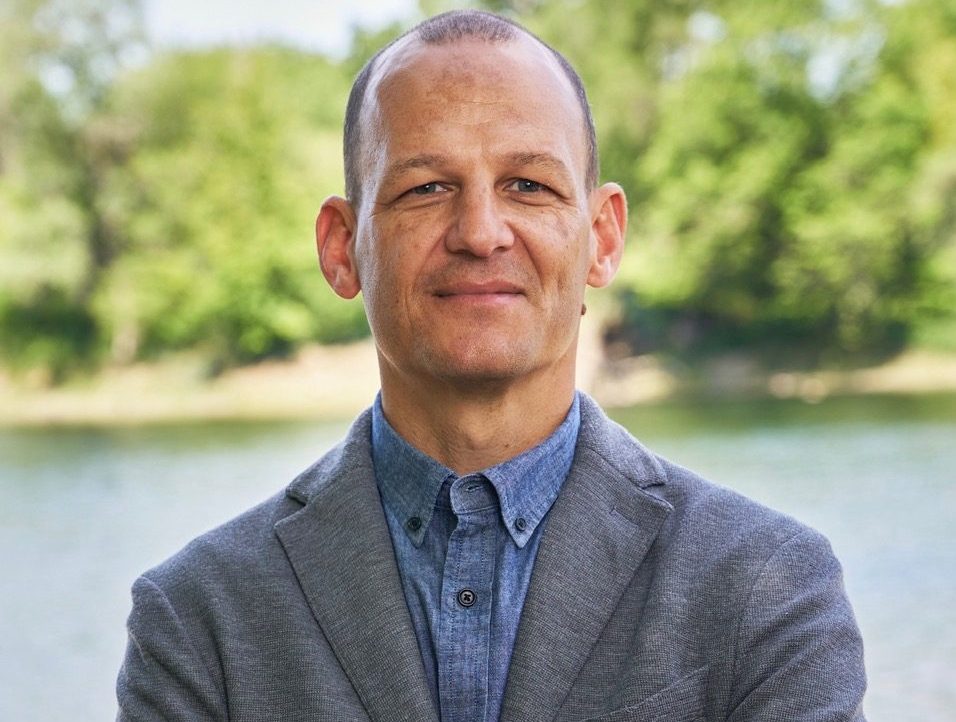Sacramento Mayor Kevin McCarty used his first State of the City to outline a series of housing, public safety, and economic initiatives aimed at shaping what he called “a Sacramento that works for everyone.”
The event Oct. 20 at The Sofia in Midtown featured a fireside chat with Capital Public Radio host Vicki Gonzalez before a full audience. The discussion marked McCarty’s first major public appearance since taking office in December and offered residents a clear view of his administration’s priorities for the year ahead.
McCarty said his administration’s top priority is addressing homelessness by doubling the city’s number of available shelter beds. He said Sacramento will expand its use of tiny-home villages — small, lockable structures with electricity and climate control — to provide faster, more cost-effective shelter than traditional permanent housing.
A 135-unit site on Roseville Road is scheduled to open soon as part of the plan, and additional locations are expected throughout the city. The goal, McCarty said, is to provide “a dignified, immediate alternative to encampments” while longer-term housing projects are developed.
“We still see too many unsheltered people on our streets and in our communities and we need to do things differently,” McCarty said.
Each tiny home costs $10,000-$15,000 to construct, plus infrastructure expenses of about $70,000 per site. A comparable unit of permanent supportive housing can cost several hundred thousand dollars. Residents will contribute up to 30% of their income, such as Supplemental Security Income, when possible.
McCarty said the approach must include case management, outreach, and transition planning to ensure residents move from temporary housing to stability. In addition to tiny homes, the city will open a safe-parking site for people living in vehicles, offering access to sanitation, security, and on-site services. Sacramento also will continue its motel conversion program and other shelter expansion projects as part of what McCarty described as “a layered housing response.”
Black people, who are about 11% of the county’s population, made up 33% of the unhoused population in the 2024 Point-in-Time Count, meaning they are about three times more likely to be unhoused.
McCarty also discussed plans to make homeownership more attainable and to prevent displacement. His proposal includes a down-payment grant program for first-time homebuyers and expanded rental assistance, funded through a proposed increase in Sacramento’s real-estate transfer tax.
“I’m deeply concerned about this and how it impacts the next generation,” McCarty said.
The measure would raise the tax rate from 0.275% to 1% on property sales above $1 million, generating an estimated $9 million annually. McCarty said approximately 99% of Sacramento home sales would not be affected. The new revenue would support down-payment assistance, eviction prevention, and other housing-stability programs.
The mayor plans to place the proposal on the 2026 ballot. Supporters say the measure would create a steady funding stream for housing aid; critics warn it could slow high-end real-estate activity and reduce overall revenue if sales decline.
McCarty said the initiative reflects his commitment to addressing both homelessness and the broader affordability crisis. “We can’t focus only on shelters,” he said. “We also need to help working families build stability and keep a roof over their heads.”
In the region, the Black homeownership rate was estimated at about 34% in 2021 compared to 62% region-wide.
In Sacramento specifically, one analysis puts the Black homeownership rate at about 31.3%, compared with about 66% for white residents.
The mayor also emphasized public safety, saying the city’s approach must be rooted in accountability and prevention. McCarty said Sacramento will continue to support community-based violence-intervention programs while strengthening collaboration between police, outreach workers, and neighborhood leaders.
He noted that reducing crime means investing in the conditions that prevent it, including stable housing, jobs, and youth programs. McCarty said his administration will work to expand after-school and youth-employment programs, drawing on his experience as a state legislator who pushed for early-education funding and police-oversight reform.
He said public safety should be measured not only by arrests or response times but by whether residents feel safe and supported in their neighborhoods. “Public safety also means programs that keep people out of trouble in the first place,” McCarty said. “But we have to have a dedicated police force.”
The mayor also highlighted plans to strengthen the city’s 9-1-1 response capacity and mental-health crisis intervention programs, ensuring first responders have the resources and training to handle emergencies safely.
McCarty reaffirmed the city’s commitment to completing the Sacramento River Parkway, a 33-mile trail connecting Folsom to Freeport, by 2030. The levee-top path would link neighborhoods, parks, and job centers while expanding access to recreation and alternative transportation.
Segments between Garcia Bend Park and Zacharias Park already are in design, and the city is securing additional easements and environmental approvals. The project, first envisioned decades ago, has faced property and permitting challenges. McCarty said finishing the trail would connect Sacramento’s neighborhoods and increase equitable access to open space.
The mayor also highlighted Sacramento’s push to become “MLB-Ready.” Building on momentum from hosting the Athletics temporarily at Sutter Health Park, McCarty said the city aims to show Major League Baseball it has the infrastructure, market, and community support to sustain a permanent franchise.
The effort includes facility upgrades, transit coordination, and partnerships with private investors. McCarty framed the plan as both a civic pride project and an economic development tool, with potential benefits for local jobs and youth sports.
“Sacramento has proven it can deliver big-league moments,” McCarty said in conversation with Gonzalez. “Now we’re showing that we’re ready for big-league status.”
Throughout the discussion, McCarty returned to a consistent theme: connecting city investment to equity and opportunity. His proposals on housing, safety, and infrastructure all tie into that framework.
The State of the City fireside chat signaled a mayor focused on collaboration and measurable results. While many of his ideas will require City Council approval and voter support, McCarty said Sacramento must act with urgency.
Related

